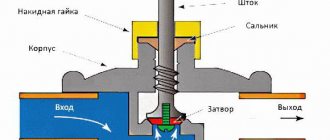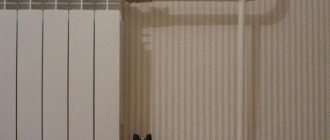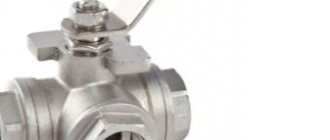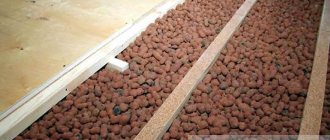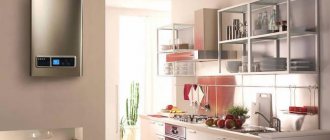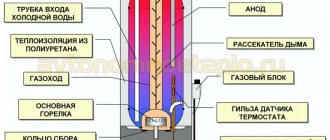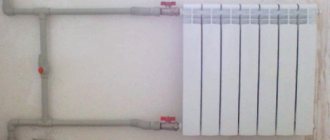Popularity indicators for the use of water shut-off devices
The use of such fittings in everyday life is very common, but it is practically impossible to answer the question of which device (valve, valve, ball valve) is better. It depends on the system in which it is installed and the method of operation. Each device has its pros and cons. They must be taken into account when installing in a specific wiring diagram. One device may be a perfect fit, while others may not live up to expectations.
Before the advent of the ball valve, valves and valves were used in the water supply system.
Operating principle and design
The balancing valve design is similar to that of a conventional ball valve, but it has distinctive details:
- Shutter indicator;
- Measuring diaphragm;
- The pipe on which the faucet is installed;
- Position lock.
The body is usually made of brass or steel. Also, for proper functioning, a membrane in the form of a seal is installed in the structure. The seat and valve monitor fluid flow. The designer also contains a valve stem; it comes in four types: straight, oblique, rising or falling. To understand how this device works, you can see the figure below.
As can be seen in the image, the rod has an oblique shape, which reduces hydraulic resistance. Such a unit has high precision control of liquid flow by differential pressure regulators and excellent performance in terms of service life despite the coolant temperature.
Gate valve
The device works this way. When the flywheel is turned, the passage of liquid is blocked by a perpendicularly positioned shutter. This type is still widely used in plumbing, where there is a need to shut off large flows of water in pipes with a large diameter, and less often in everyday life. The service life of the valve depends on the specific design and is 10-20 years, and the operational life (before failure) can be 2-3 thousand cycles.
Disputes about the methods of operating the valve continue today. Some argue that it should serve shut-off and regulating purposes, while others that it should be kept either closed or open, since wear and tear is inevitable with constant operation. Even a half-open (closed) valve is susceptible to abrasive substances (materials suspended in water) such as sand and other solid particles, which lead to the formation of scratches, gouges and other minor damage. The defects that appear reduce the mating of the locking unit. The exception is valves with a rubberized wedge, but their production is limited to use in large-diameter pipes, and those used in everyday life (1/2-1 inch) have a brass valve.
When sold, the characteristics of such products are listed as shut-off and control valves. Therefore, we can say that the valve can be kept half-open.
This type of liquid shut-off device has its pros and cons. The advantages are represented by the following qualities:
- low hydraulic resistance, which prevents a reduction in the used diameter;
- full patency of the device (without bends and turns that create turbulence);
- short operational length;
- maintainability.
The disadvantages that are noticeable during operation are as follows:
- loss of tightness due to clogging (removed by cleaning the seating surfaces);
- the appearance of a leak from under the rod (it can be eliminated by tightening the stuffing box nut or replacing the gasket of the same name, if it is found on sale);
- large height, which does not allow installation of the valve in rooms with limited height);
- complete closing and opening of the product takes quite a long time (requires more than one turn of the flywheel);
- limited range (produced by only a few manufacturing plants).
Considering the valve as an element of everyday use, we can talk about it as a giant among the Lilliputians. And the use of such a device in public utilities and industry, where large-diameter pipes are used, is justified.
Why is it needed?
Modern large heating systems are not able to cope with the uneven movement of warm water, which leads to improper heating in different rooms. Often, incorrect calculation of water supply leads to the fact that the coolant consumption is very high, and not all the liquid reaches the radiators in the back room.
To equalize the flow of warm water supplied by boilers in different branches of the heating system, balancing valves are used, which ensure high-quality operation of the coolants.
The purpose of the product can be different - it is used both in the hot water pipeline and in heating systems for residential premises of various types and sizes, including if electric heat pumps are installed in the pipeline.
Most often, this device is used by specialists in hydraulic systems to regulate the local level of hydraulic resistance by reducing or increasing the cross-section inside the mechanism. It is simple in design and, thanks to its mechanical operation, can function smoothly. Once we have figured out what it is, we can proceed to selecting the product and installing it.
Valve or shut-off valve
The valve can be called the brother of the gate valve. The device is activated by turning the flywheel, which transmits an impulse to the spindle, which begins to move forward and at the other end the spool, equipped with a gasket, closes. If the valve closes, then reaching the lower position, it rests against the seat, as a result of which the liquid is blocked (locked). This is where the name comes from - shut-off valve. Shut-off valves are widely used in water and fuel systems. They are shut-off and regulating and are presented in a wide variety of appearance and design. The service life varies from 20 to 30 years due to the quality of materials and operating characteristics. Wear occurs when 8 thousand closed-open cycles have been completed.
The devices also have their advantages and disadvantages. The advantages are determined by its operational characteristics:
- smooth regulation of water flow
- maintainability (replacement of the spool gasket or stuffing box gasket with its tightening);
- the presence of a smaller number of rubbing parts, which provides the valve with an increase in service life;
- the use of valves when regulating the flow of water to several objects (you simply cannot do without them) water and heat supply.
Disadvantages are characterized by a decrease in performance properties due to:
- increased hydraulic resistance, creating a stagnation zone where suspended particles can accumulate, which can cause premature wear and corrosion;
- failure of the spool gasket (separation by liquid flow, sticking, drying out), which leads to frequent repairs;
- the need to maintain the valve device in working condition, for which it should be completely opened or closed at least once a year if there has been no load in operation for a long time.
The exception to the rule here is a direct-flow valve with an inclined spindle, where less resistance is created in the hydraulics. This is achieved by the oriented position of the seat towards the fluid flow.
Conclusions website
- The valve has two positions - the “open” position and the “closed” position.
- The design of the valve, in addition to turning it on/off, also allows you to regulate the pressure of the working flow.
- Visually, a faucet differs from a valve in the following way: if the handle is simple and its end is attached to the stem, it is a faucet; if there is a “wing” on the stem instead of a handle, it is a valve.
Shut-off valves are used in sewerage and gas pipeline installations. It is visible on general purpose pipelines, industrial pipelines, industrial pipelines with special operating conditions, sanitary pipelines and many others. They are designed to block any water or gas flows.
Household plumbing cannot do without such mechanisms, but few people understand the difference between a faucet and a valve. Without this, it is simply impossible to connect household appliances, fix a leak, turn off the gas, or change the mixer. Plumbing surrounds us all around us, and shut-off valves are an integral part of it.
Professional advice
In fact, it has significant differences, both structural and operational, although any design solution for this type of fittings always works in two positions: closed and open.
But, based on their functional characteristics and scope of application, one or another type of device is selected. To make the right choice, you should know how the principle of their operation may differ, and what function each of them performs.
Ball valve
The lead in application among locking devices belongs to the ball valve. Many masters rightfully consider them the best. Despite its existence for more than a hundred years, it has become a leader thanks to the use of the latest sealants. Ball-shaped locking element. The ball is connected through a rod to a lever and when the lever is acted upon, the movement of the ball sets the locking device (a recess in the ball itself) to the desired position “closed or open”.
Ball valves are:
- pass-through (the passage of liquid through the tap is equal to the flow of liquid due to the equality of the diameter in the pipe and the tap) with the absence of hydraulic resistance;
- reduced, where the diameter of the passage through the tap is smaller than the opening of the water supply pipe, where the resistance changes (used in systems where the presence of such resistance is not particularly important).
Ball devices are used in water, heat, and gas supply. It has especially surpassed its counterparts in water supply - the gate valve and valve. Using a crane has its advantages and disadvantages.
The advantages are expressed by the following qualities:
- versatility, application in all areas where liquid substances pass through pipes;
- diversity, expressed by different types (with external and internal threads) and configuration, disassembly and the ability to connect in any combination with parts and built-in filters;
- practicality and durability (service life up to 50 years) with a 25 thousandth operation cycle;
- small dimensions, which allow it to be used in different systems and premises;
- speed of opening and closing the device;
- blocking the flow in a quarter turn (its counterparts do not have this property).
Ball valves have the following disadvantages:
- the limitation of its use in water supply systems is due to the fact that such taps are not fully regulating. Internal balls, when not fully rotated, allow debris to clog the resulting cracks and contribute to depressurization and wear of the locking device;
- low frost resistance (remaining liquid in the faucet may freeze) and render the faucet unusable, which cannot be said about the other types described here;
- recommended opening and closing of the tap for reasons similar to those of the valve.
general information
A valve is a drive fitting used for the manufacture of a pipeline, where the gate valve rotates around its own axis in a perpendicular direction. The element includes two components:
- Movable type cork;
- Static body.
Fig. 1. How the structure is constructed
The valve is a drive-type fitting, where the structure moves along the flow and fits onto the seat. Designed for direct opening or closing, regulating the flow of any medium.
Plastic or metal faucet
With the arrival of polypropylene pipes on the market, polypropylene taps began to be actively promoted. They are offered as a cheap alternative to brass. Any plastic under constant temperature influence can become unusable in a short time. This is important to consider when purchasing plastic taps.
Often, polypropylene taps are connected to a pipe by welding. After the faucet fails, you will need to cut off the pipe and weld a new faucet into it. With metal taps everything is different. You need to unscrew one and install the other.
When choosing the best faucet, remember that a brass faucet is always more reliable than any plastic.
How to choose
If you decide to install a shut-off and balancing valve in your heating system, then decide in advance which product is suitable in your case based on four factors:
- Control type – automatic or manual balancing valve;
- Functions – why and for what purpose will you install the device; the product will be installed for a multi-story or one-story private house;
- Mounting method – fixing flanges or threaded;
- Popularity of the manufacturer - you should not purchase crafts from unknown companies; pay attention to models from such companies: Danfoss, Watts, HERZ, Cimberio.
When you have made your choice, you can safely purchase the product. You can carry out the installation yourself, but it is better to contact a specialist: the problem is that they are configured with a special device, without which it will not be possible to install the unit correctly.
DIY installation
Installation in a hot water supply system or heating system is only possible if the device is provided for by its design and there are problems with the distribution of liquids.
You can install the unit yourself, the main thing is to take into account the installation rules and certain features of the work. You need to have water supply or heating piping diagrams on hand.
Source

